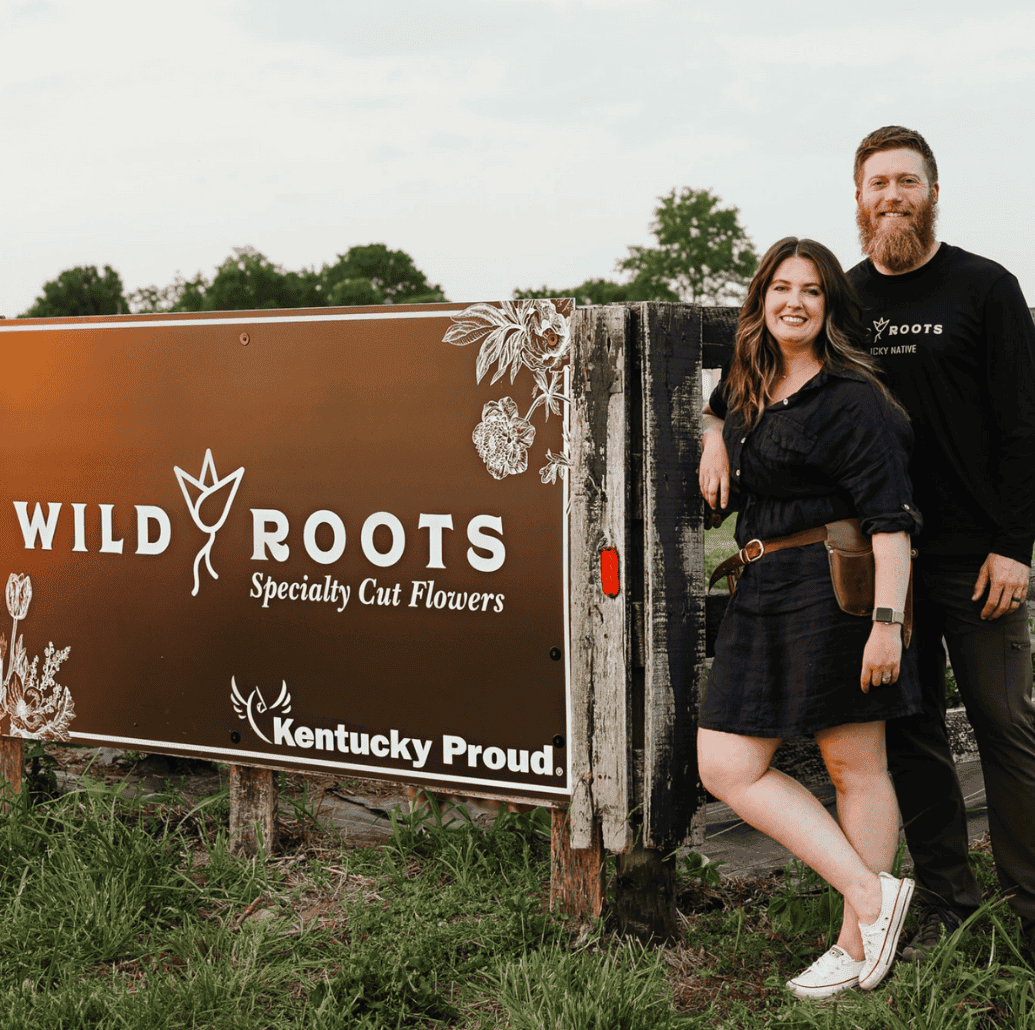We are so excited to feature Alexis Sheffield of Wild Roots, the specialty cut flower farm and floral design studio located in Harrodsburg, Kentucky. Along with her partner Tyler, and adorable pups, Remy and Finn, Wild Roots grows both annuals and perennials on about an acre of land.
Their fresh, local, and sustainably grown flowers are used to fill their CSA program, as well as special orders and full-service and à la carte weddings. Alexis shared with us about her beginnings in horticulture, why she added more yellow flowers to the crop plan this year, plus, a little about the magic found in farming.
Thank you, Alexis, for sharing from the heart! Be sure to keep up with Wild Roots on Instagram and their website.
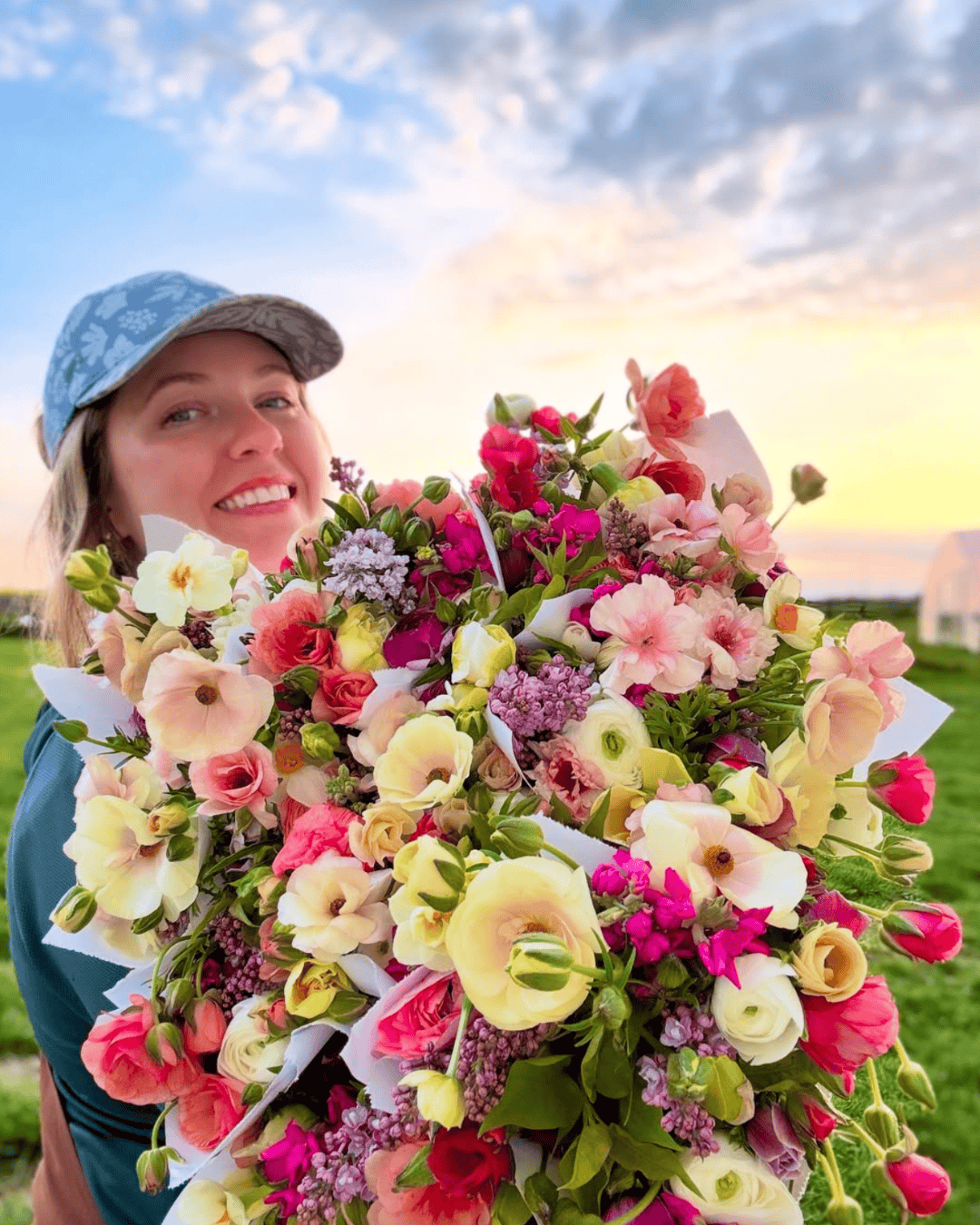
Talk about your flower journey - How did you get started?
I got started farming because I have this terrible habit of turning all my hobbies into hustles—ha! But in all seriousness, I have degrees in horticulture, so it was pretty clear early on that plants were going to be a big part of my life. After grad school, one full-time job just didn’t feel like enough, so I started designing wedding florals for friends. When it came time for my wedding, I did what so many of us do and said, “I’m just going to grow it all myself!” I mean, what did I go to school for if not to grow things? That was ten seasons ago, and since then, we’ve grown from a tiny plot of rented land to a farm of our own.
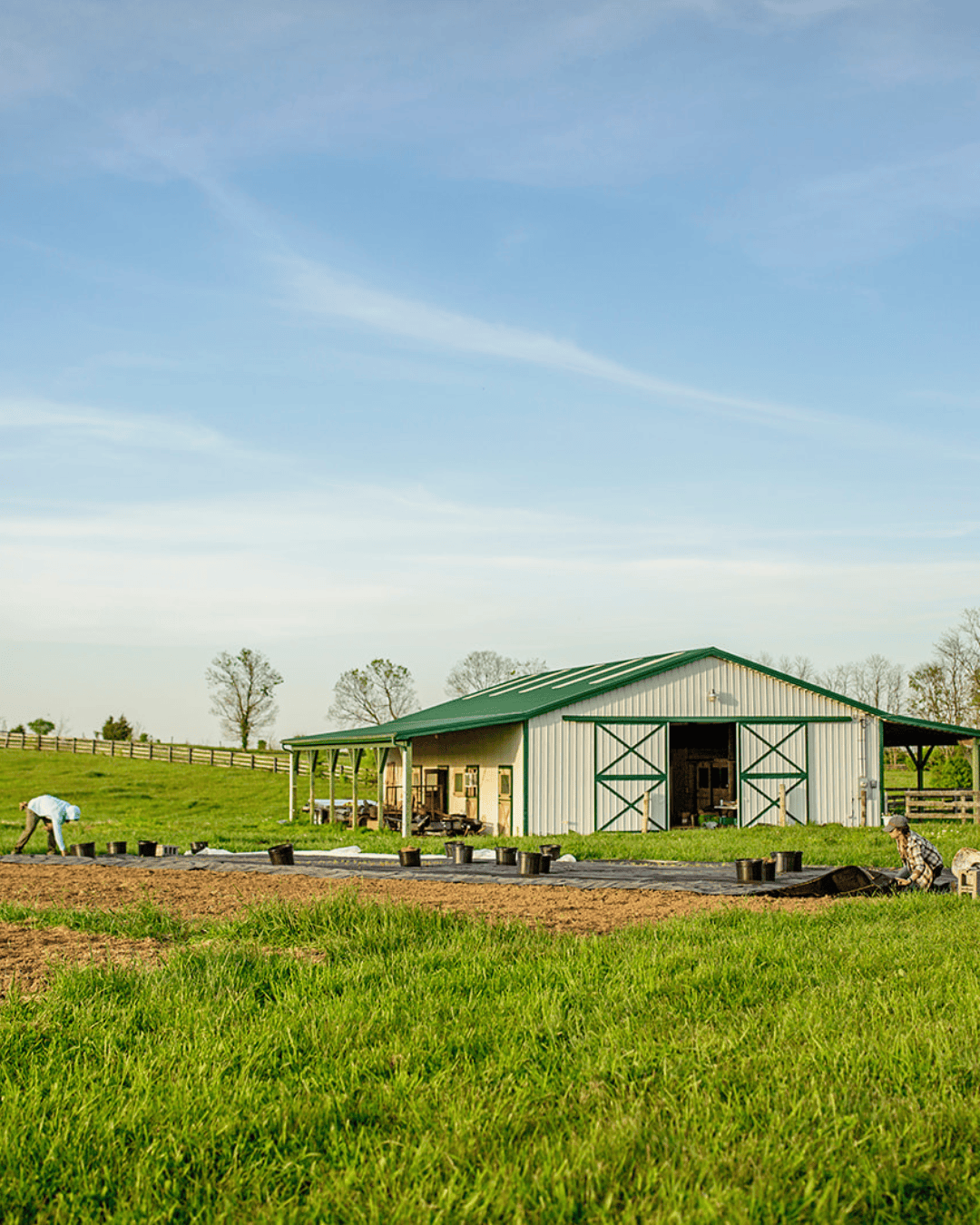
Tell us about your farm and anything you specialize in.
Like many flower farmers, we grow a little bit of everything—but we try to focus on the weird and wonderful, especially native Kentucky plants. While some KY natives are already staples in the cut flower world (hello, baptisia and solidago!), there are so many underused gems we’d love to see more of in floral design. If you’ve ever seen Queen of the Prairie or Rattlesnake Master, you know exactly what I mean. We moved to our 14-acre farm in the fall of 2020 and are currently producing on about one acre. That includes a few hundred woody shrubs, peonies, and around a third of an acre of perennials and annuals, as well as two high tunnels and a propagation greenhouse where we are experimenting with winter production. It’s just me and my partner running the show, with about 10 hours a week of extra help.
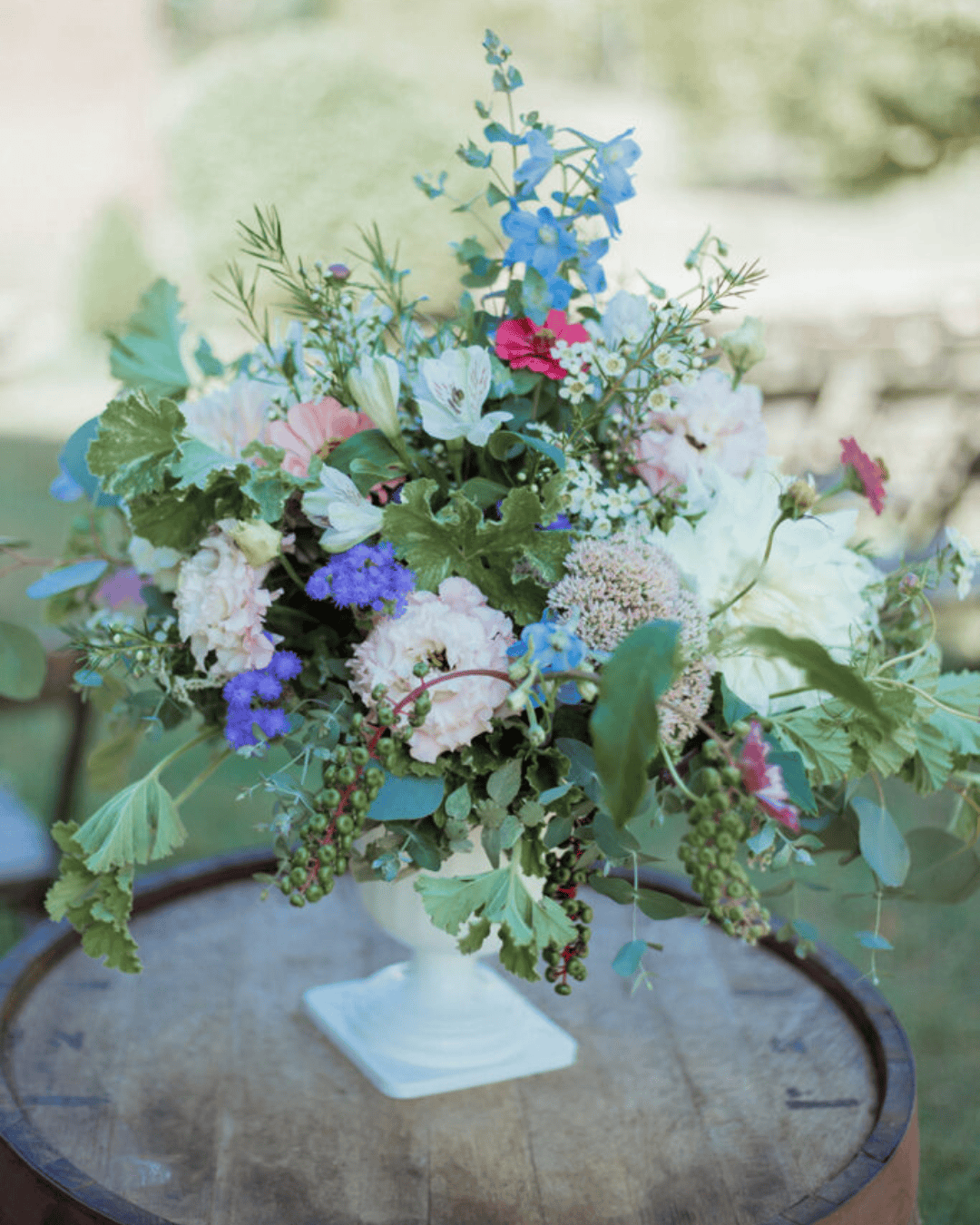
Talk about anything you love about using Rooted!
I firmly believe—and have the numbers to prove it—that we wouldn’t have been able to grow our wholesale business without Rooted. Even more importantly, we owe a huge part of our success to the Kentucky Flower Market collective we’re proud to be part of. Both my partner and I work full-time jobs in addition to running the farm, so managing wholesale orders before Rooted and KFM was honestly a nightmare. Keeping track of everything was overwhelming, and delivering to more than a few shops just wasn’t realistic—we simply didn’t have the time or mental bandwidth. Using an online platform has been a total game-changer. It’s simplified our lives and allowed us to focus on what we do best: growing beautiful, sustainable blooms.

Talk about your crop planning process - how do you decide what to grow?
Now that I have a solid amount of my own sales data—and access to Rooted’s national trends—I’ve really leaned into using the analytics tab to plan for the upcoming season. I looked closely at what was trending, what was new, and what sold unexpectedly well. For example, I never would have ordered more yellow butterfly ranunculus this year if I hadn’t checked my past sales and seen how quickly they sold last season. Yellow usually isn’t a top color in my market, so that insight was a total surprise—and exactly the kind of thing that helps me make smarter growing decisions.
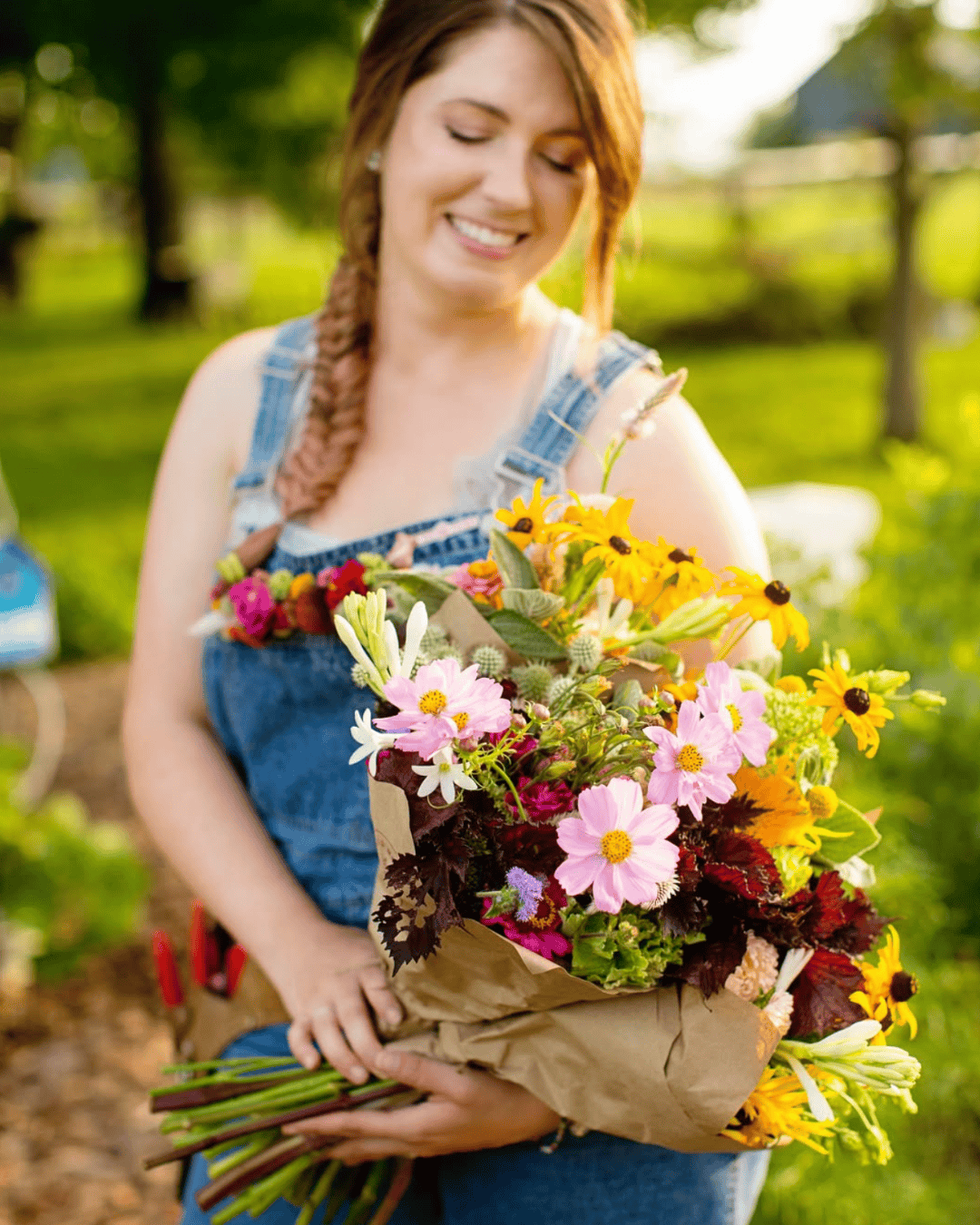
What’s one thing you wish more people understood about flower farming?
Not just flower farming, but farming in general is a learned skill.
What is a lesson in flower farming that you've had to learn the hard way?
You will always feel behind—seriously. If there’s a farmer out there who never feels behind at some point in the season, no matter their scale or how much help they have, I’ll eat an aphid! I’ve learned to give myself grace. We work in an industry that’s completely dependent on the weather, and here in Kentucky, Mother Nature can be very unpredictable. But the truth is, it always works out in the end. Some of my best discoveries have come from planting something “too late” and ending up with blooms at a time I never would’ve expected. Farming keeps you humble, but it also keeps you learning—and that’s part of the magic.
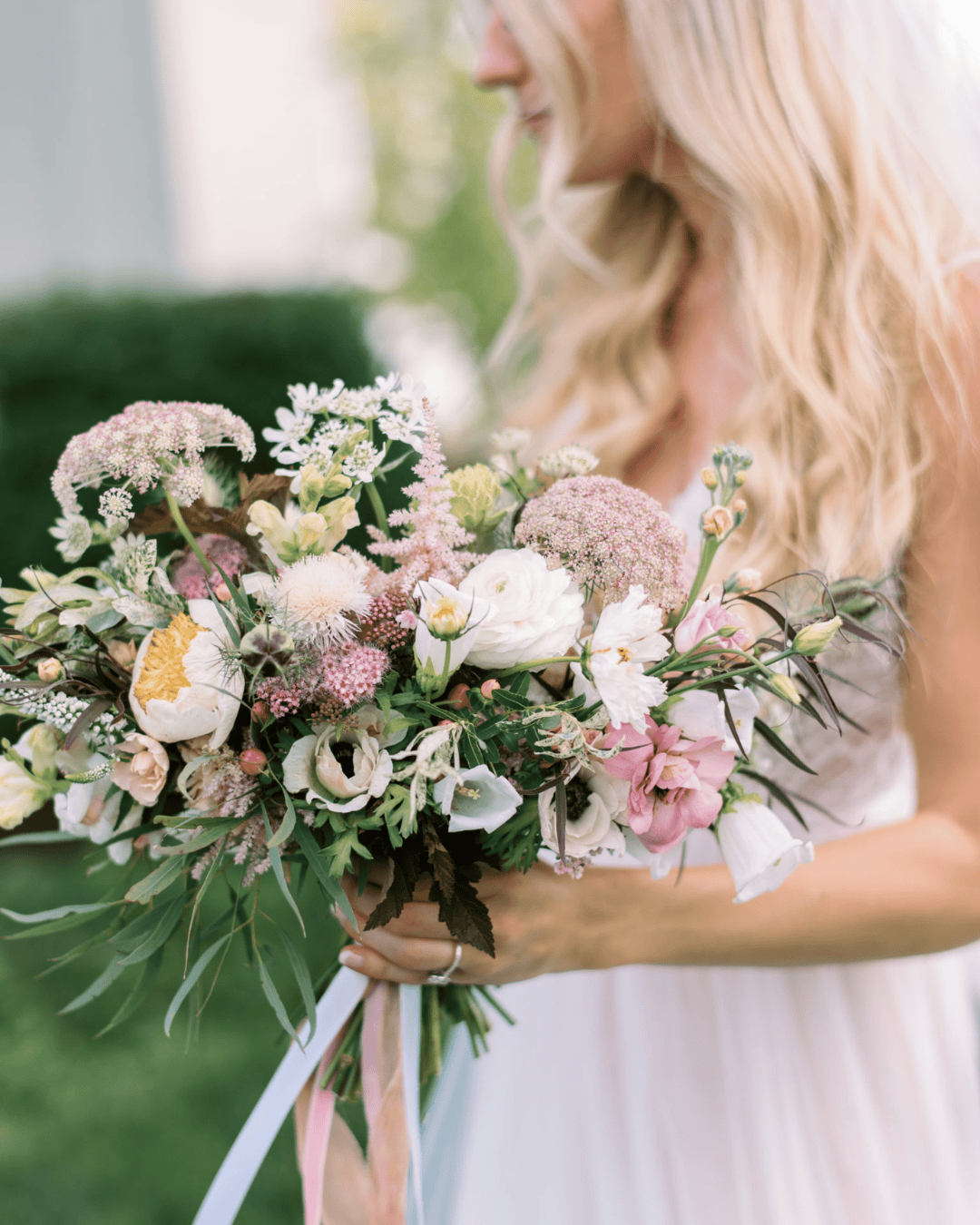
What is one small joy in your farming routine that never gets old?
Gosh, I just love all forms of propagation—seed starting, cuttings, dividing plants—the whole gamut. There’s something so satisfying about it. It makes me feel productive and future-focused, while also being incredibly calming. And then, when those little seeds finally pop up? As a farmer, name a better feeling! That moment—along with harvesting the first stem of a crop—is always so special. Even if I’ve grown it a dozen times before, there’s still that little spark of pride when I can say, “I actually did it.” No matter how many plants I’ve grown over the years, that feeling never gets old.
Thank you, Alexis, for sharing your journey with us! Be sure to keep up with Wild Roots on Instagram and their website.
Categories
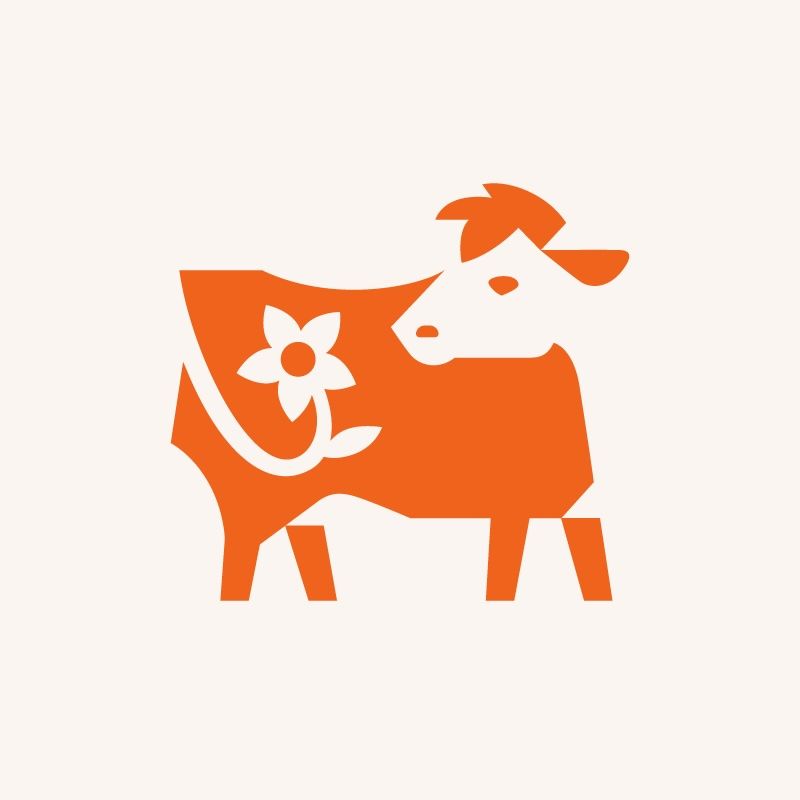
About the Author
Rooted Farmers
The Rooted Farmers Team is happy to bring you content that we hope provides value. The topics covered range from farming and running a hub, to sales, marketing, and all things related to building your business, to the unique challenges faced by growers. Our philosophy in sharing this content is that we are always in a position to learn; embracing this mentality will only help us to grow, both within our businesses and personally. If there is a topic that you feel would be of value to the Rooted Farmers community, we encourage you to share your ideas with us by sending an email to: reachout@rootedfarmers.com
